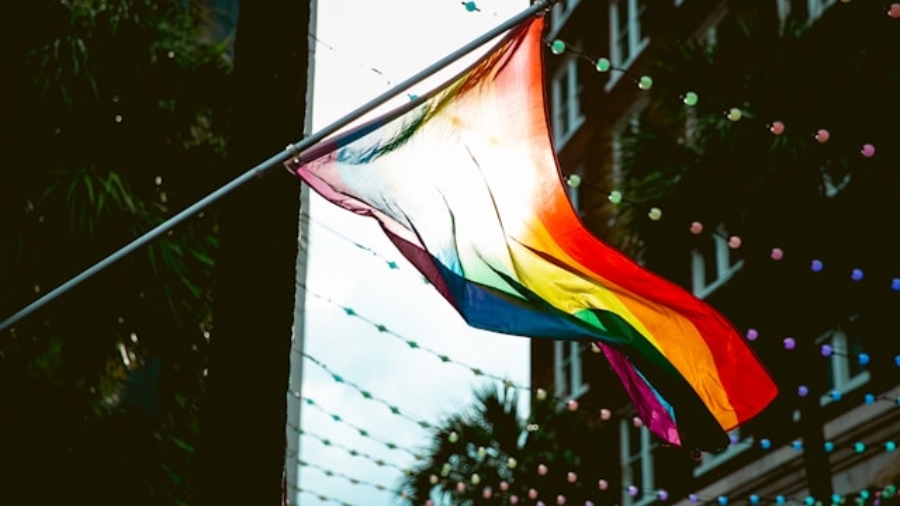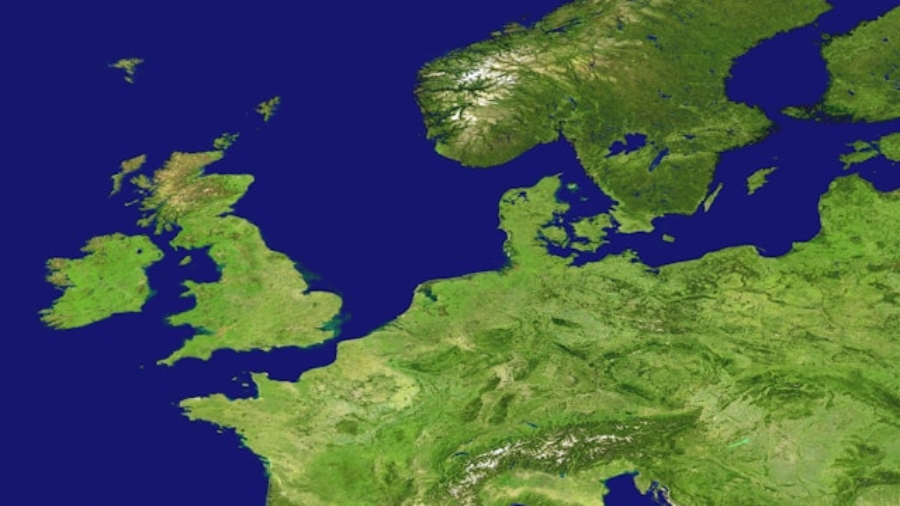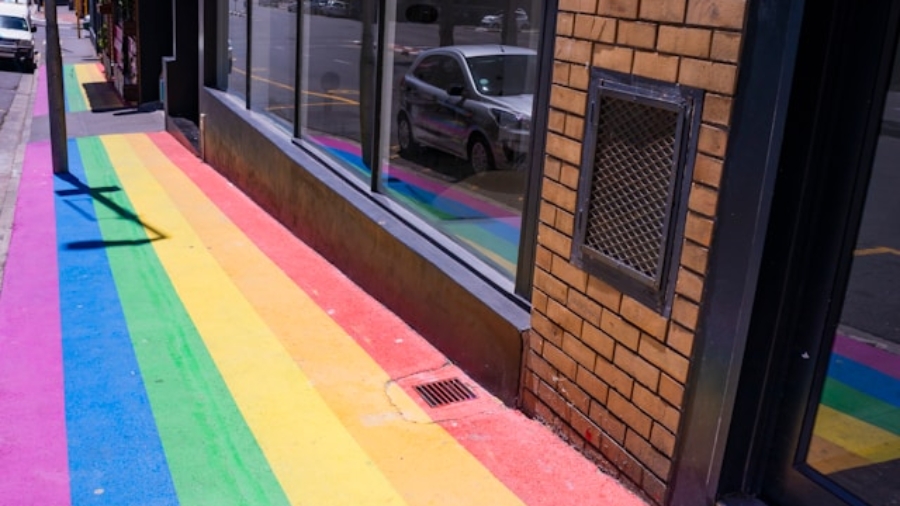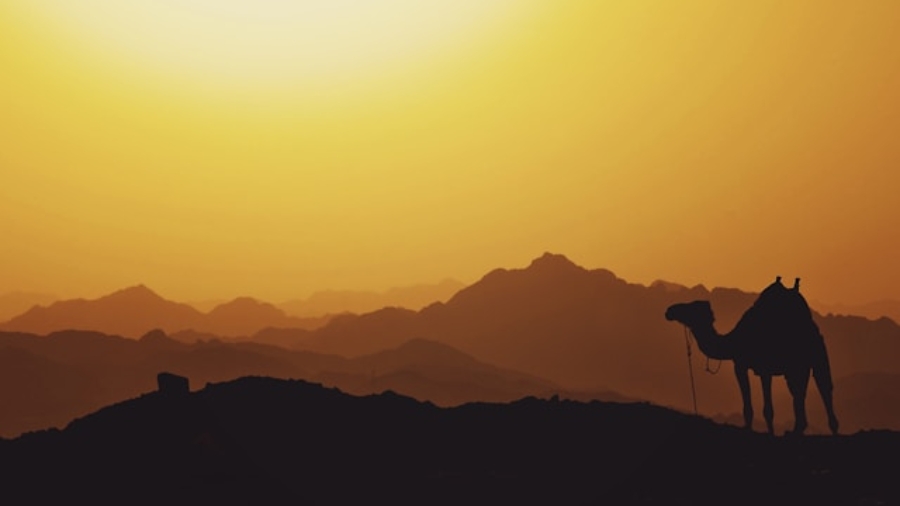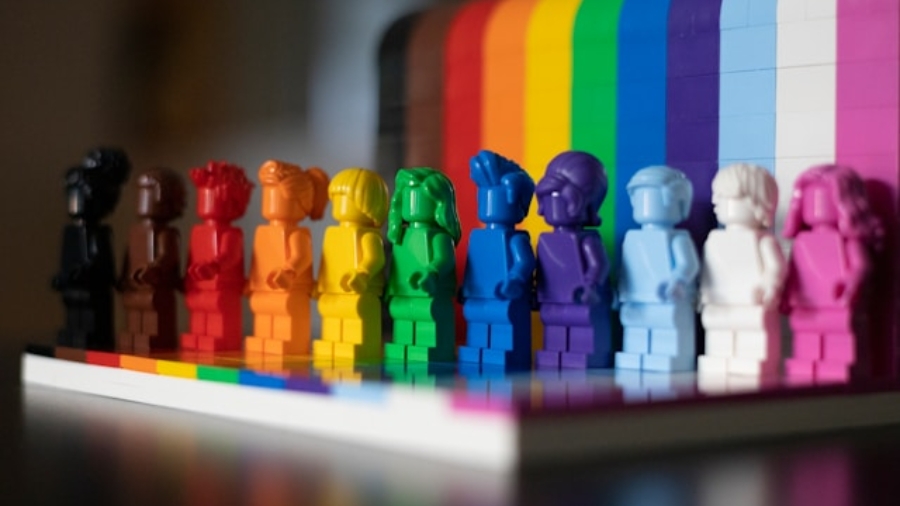Travel Destinations for LGBTQ+ Travellers
Picture this: you’re standing on a sun-drenched beach, holding hands with your partner without a second thought. Rainbow flags flutter in the breeze, locals greet you with genuine warmth, and for once, you can simply be yourself. This isn’t just a dream—it’s the reality in many of the world’s most inclusive travel destinations for LGBTQ+ travellers in 2025.
As our community continues to navigate an increasingly complex global landscape, choosing where to travel has become more than just picking a pretty location. It’s about finding places where we’re not just tolerated, but celebrated. Where our safety is protected by law, and our love is recognized without question. Whether you’re planning a romantic getaway, a solo adventure, or a family vacation, this guide will help you discover destinations that truly roll out the rainbow carpet.
Why LGBTQ+-Inclusive Travel Matters More Than Ever
The world remains a patchwork of acceptance and hostility for LGBTQ+ individuals. More than 60 countries still criminalize consensual same-sex relations, making destination research not just helpful, but essential for our safety and peace of mind.
But here’s the uplifting news: as of 2025, same-sex marriage is legally recognized in 38 countries worldwide, and many destinations are actively working to become more welcoming. Travel isn’t just about escape—it’s about connection, celebration, and finding communities that affirm who we are.
Recent developments show both progress and setbacks. Thailand legalized same-sex marriage in January 2025, while Namibia’s High Court declared the criminalization of same-sex acts unconstitutional in June 2024. These victories remind us that change is possible, even in unexpected places.
Top Inclusive Travel Destinations for LGBTQ+ Travellers in 2025
Europe: A Tapestry of Acceptance
Portugal: Where Warmth Meets Progressive Values
Portugal ranks joint first on the 2025 Spartacus Gay Travel Index, and for good reason. This sun-soaked country combines progressive legislation with genuine cultural warmth. Since legalizing same-sex marriage in 2010 and granting equal adoption rights in 2016, Portugal has become a beacon for LGBTQ+ travelers seeking both safety and beauty.
Lisbon’s Rua Barroca area serves as the heart of the city’s vibrant queer scene, while Porto offers a more intimate atmosphere with bars and clubs scattered throughout its historic streets. The best part? Public drinking is legal, and clubs don’t close at any specific time, making Portugal particularly popular with night owls.
Don’t Miss: Queer Lisboa, one of Europe’s most important alternative film festivals, celebrating LGBTQ+ cinema and culture.
Berlin: A Century of Queer History
Germany’s capital has been at the forefront of LGBTQ+ rights for over a century. Schöneberg has had gay and lesbian bars since the 1920s, making it one of the oldest gay boroughs on the planet. The neighborhood continues to thrive, offering everything from historic venues to cutting-edge nightlife.
Berlin’s Christopher Street Day on July 26, 2025, marks the culmination of month-long Pride festivities that kick off on June 27. This massive celebration, named after Manhattan’s Stonewall Inn location, is Germany’s largest Pride event and draws hundreds of thousands of participants from around the world.
Amsterdam: Pioneering Inclusivity
The Netherlands has long been a trailblazer for LGBTQ+ rights, and Amsterdam remains its most welcoming city. Cafe ‘t Mandje, first opened by flamboyant lesbian impresario Bet van Beeran in 1927, remains a staple of the city’s queer scene (currently closed for renovations but expected to reopen in 2025).
For late-night adventures, EXIT Café welcomes all comers and stays open later than most Amsterdam bars, perfect for those seeking an epic night on the town. First-time visitors should stop by Pink Point, a dedicated LGBTQ+ information booth providing tips and recommendations.
North America: Diverse Options from Coast to Coast
San Francisco: The Legendary Castro
No list of inclusive travel destinations would be complete without San Francisco. Rainbow flags wave proudly over Castro Street where nightlife pulses with creativity from drag shows to underground dance parties. This historic neighborhood continues to be a pilgrimage site for LGBTQ+ travelers worldwide.
Beyond the Castro, the city offers world-class museums, stunning views of the Golden Gate Bridge, and a food scene that rivals any major metropolis. Oakland across the Bay adds its own flavor with diverse art scenes and inclusive festivals.
Palm Springs: Desert Glamour
This California desert oasis has been a haven for LGBTQ+ travelers since Hollywood’s golden age. Downtown and E Arenas Road overflow with sleek gay bars, restaurants, and hotels. The Dinah Shore Weekend is touted as one of the biggest lesbian festivals in the world, while the city’s Pride festival is the largest in the Coachella Valley.
Thanks to year-round warm weather, Palm Springs Pride takes place from November 6-9, 2025, offering a late-season celebration when most other Pride events have concluded.
Key West: The Conch Republic’s Quirky Charm
Florida’s southernmost city operates by its own rules, creating a bubble of acceptance in an increasingly challenging state. Fantasy Fest leading up to Halloween (October 17-26, 2025) amps up the craziness on this intensely fun island. The rule of thumb? Treat it as a fantasy and bring your costumes and open mind.
Pacific Paradise: Hawaii’s Aloha Spirit
The Hawaiian Islands shimmer with natural beauty and cultural warmth, making them among the best gay travel destinations for 2025. From Maui’s golden beaches and the Road to Hana’s hidden waterfalls to the Big Island’s adventure activities, Hawaii offers inclusive paradise for families and couples alike.
The islands’ mix of lively festivals, farm-to-table dining, and pristine snorkeling spots ensures every traveler finds their rhythm. Whether you’re watching volcanic landscapes or enjoying an oceanfront luau, Hawaii’s spirit of aloha extends warmly to LGBTQ+ visitors.
Beyond the Usual Suspects
Copenhagen: Scandinavian Style and Substance
Copenhagen is home to the world’s oldest existing gay bar, Centralhjørnet, with the Latin Quarter and Studiestræde serving as hubs of the city’s LGBTQ+ nightlife. But what makes Copenhagen special is that LGBTQ+ travelers are welcomed throughout the entire city, not just in designated neighborhoods.
Rainbow flags appear during the annual Pride festival, and the city’s legendary Danish design aesthetic, bike-friendly streets, and hygge culture make it an ideal destination for those seeking both style and substance.
Costa Rica: Pura Vida for Everyone
Looking beyond traditional hotspots, Costa Rica offers dazzling nightlife, lush jungles, pristine beaches, and volcanoes in a package that’s increasingly LGBTQ+-friendly. The country’s “pura vida” (pure life) philosophy extends to all visitors, and its natural beauty provides countless opportunities for adventure.
Essential Safety Considerations
Research Before You Go
Not all destinations are created equal when it comes to LGBTQ+ safety. IGLTA has partnered with Destination Pride, a data-driven platform that visualizes the world’s LGBTQ+ laws, rights, and social sentiment using thousands of data points.
Before booking, ask yourself these critical questions:
- Do you feel comfortable closeting yourself if necessary?
- How important are public displays of affection on this trip?
- Can you pass as straight or cisgender if needed?
- What are the local laws regarding LGBTQ+ individuals?
Legal Landscape Matters
Understanding local laws is crucial for safe travel. Many countries have complex legal landscapes where some have decriminalized homosexuality but haven’t implemented protections against discrimination. Others may rarely enforce anti-LGBTQ+ laws, but their existence still poses risks.
Check resources like Equaldex, the Human Dignity Trust, and ILGA World for comprehensive, up-to-date information on LGBTQ+ rights worldwide.
Travel Insurance and Documentation
Travel insurance can help during emergencies and medical evacuations, with some companies offering products specifically for LGBTQ+ travelers. Ensure your insurance covers all family members traveling with you.
For transgender and non-binary travelers, documentation requires extra attention. Consider whether your passport photo matches your current appearance, and carry any necessary medical documentation translated into the local language.
Making the Most of Your LGBTQ+-Friendly Vacation
Connect with Local Communities
One of the most rewarding aspects of LGBTQ+ travel is connecting with queer communities worldwide. Look for local LGBTQ+ organizations, events, and businesses in your destination. Many cities have welcome centers or information booths specifically for LGBTQ+ visitors.
Hook-up apps aren’t just for dating—they’re valuable resources for meeting locals who can provide insider tips on the best spots, safest neighborhoods, and current community events.
Choose LGBTQ+-Owned and Welcoming Businesses
Support makes a difference. One of the best ways to find welcoming businesses is to look for hotels, tour operators, or tourism companies that are members of IGLTA, the International LGBTQ+ Travel Association. These businesses agree to conduct operations with honesty, integrity, and fairness toward LGBTQ+ customers.
Consider booking through MisterBNB, a platform specifically designed for LGBTQ+ travelers seeking welcoming accommodations.
Specialized Tour Operators
For those seeking curated experiences, several tour operators specialize in LGBTQ+ travel:
- Out Adventures offers active tours including hiking the Inca Trail to Machu Picchu and exploring Torres del Paine in Chile
- Olivia Travel provides programs designed for women, featuring activities like hiking, snorkeling, and cultural excursions worldwide
- Zoom Vacations curates luxury gay tours to diverse destinations
- Pink Vibgyor specializes in tailor-made tours across India and the subcontinent
The 2025 Pride Calendar
Pride season offers unique opportunities to experience LGBTQ+ culture at its most vibrant. Here are key dates:
| Destination | Pride Event | Date 2025 |
|---|---|---|
| London | London Pride | July 5 |
| Berlin | Christopher Street Day | July 26 |
| San Francisco | SF Pride | June 28-29 |
| New York | NYC Pride | June 29 |
| Palm Springs | Palm Springs Pride | November 6-9 |
| Key West | Fantasy Fest | October 17-26 |
London Pride is the biggest Pride celebration in the UK and one of the largest in the world, while Berlin’s month-long festivities create an extended celebration of queer culture.
Practical Tips for Safe, Joyful Travel
Plan Your Budget Wisely
Use tools like Going (formerly Scott’s Cheap Flights) or Hopper to find deals on flights to LGBTQ+-friendly destinations. Remember that investing in safety through proper research and insurance is never wasted money.
Stay Informed About Current Events
Political situations can shift rapidly. In September 2024, Georgia passed a law prohibiting same-sex marriage, adoption by LGBTQ+ couples, and Pride events, demonstrating how quickly conditions can change. Stay updated through travel advisories and LGBTQ+ news sources.
Trust Your Instincts
Sometimes the warmest welcomes come from unexpected places. One traveler shared a touching story from New Delhi, where a fellow shopper, upon realizing they were both waiting for girlfriends, excitedly shared photos of his brother’s husband and suggested the best underground gay bars. People are people everywhere, and kindness often transcends cultural boundaries.
Mental Health Matters
Not being able to authentically express your gender or sexual identity may cause stress and anxiety. Be mindful of your mental health needs, and don’t hesitate to seek support from professionals or LGBTQ+-focused resources while traveling.
Regional Realities: A Balanced Perspective
Areas Requiring Extra Caution
While we celebrate inclusive destinations, it’s important to acknowledge places where LGBTQ+ travelers face serious risks. Countries such as Afghanistan, Chechnya, Iran, and Saudi Arabia persist at the bottom of safety indices due to stringent anti-LGBTQ+ legislation and severe societal penalties.
Some destinations present mixed pictures. Budapest has a relatively large LGBTQ+ scene, but anti-LGBTQ+ rhetoric has been on the rise throughout Hungary, and in smaller towns intolerance is now the norm.
Making Ethical Travel Choices
There’s an ongoing debate within the community about whether to visit destinations with poor LGBTQ+ rights. Some argue tourism dollars support oppressive regimes, while others believe visiting exposes locals to new perspectives and supports local LGBTQ+ communities.
This is a personal decision. Consider your comfort level, ability to closet yourself if necessary, and whether you’re prepared to navigate potential challenges. Research local LGBTQ+ organizations and consider how your visit might impact them positively or negatively.
The Future of LGBTQ+ Travel
Despite challenges, the trajectory remains cautiously optimistic. Curaçao’s improvement in the index, moving from 70th to 58th place, is driven by legislative advances and vibrant cultural initiatives celebrating diversity. More destinations recognize the value—both cultural and economic—of welcoming LGBTQ+ travelers.
Travel companies that create inclusive programs fill a gap by offering diverse destinations, activities, and themes tailored to LGBTQ+ travelers, expanding options and fostering global understanding.
Your Journey Awaits
Choosing among the inclusive travel destinations for LGBTQ+ travellers in 2025 is an act of self-affirmation and joy. Whether you’re drawn to Portugal’s warm coastlines, Berlin’s pulsing nightlife, Hawaii’s natural beauty, or Copenhagen’s design-forward culture, there are destinations worldwide ready to welcome you with open arms.
Travel allows us to find affirming spaces, recharge our spirits, and reconnect with what makes life vibrant. It reminds us that inclusion and celebration exist, even in challenging times. As one travel expert put it, freedom is something we find and create—not something handed to us.
So start planning your 2025 adventure. Research thoroughly, pack your rainbow flag (where appropriate), and remember that every journey you take as your authentic self is an act of courage and celebration. The world is vast, diverse, and increasingly ready to welcome you home.
Ready to Start Planning?
Connect with LGBTQ+-specialized travel advisors through organizations like IGLTA or Envoyage to craft extraordinary vacations tailored to your needs. Your perfect escape awaits in communities that understand the true meaning of belonging.
What’s your dream LGBTQ+-friendly destination for 2025? Share your travel stories and recommendations in the comments below, and help fellow travelers discover new places where we can all be our fabulous, authentic selves!
Travel confidently, love freely, and remember: wherever you go, you deserve to feel safe, welcome, and celebrated.

